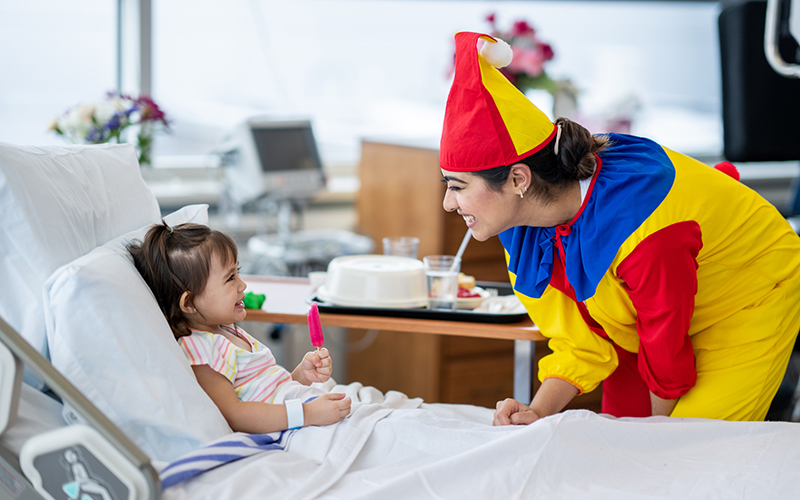This month: Medical clowns

What are medical clowns?
They are specially trained clowns that visit hospitals to help children (and sometimes adults) to deal with the emotions they experience while in hospital, such as fear, anxiety, loneliness and boredom.
Sounds a bit like that film, Patch Adams.
Yes, Patch Adams, who was played by Robin Williams, is often credited as being the first medical clown. It should be noted that he’s been quite critical of the film’s accuracy.
So what do medical clowns do?
They parody hospital procedures to help people cope with their surroundings and distract them from and demystify painful or frightening procedures.
Have they been in the news recently?
Yes, a new integrative literature review of published studies suggests that humour therapy (included medical clowns and laughter therapy/yoga) may lessen symptoms of depression and anxiety.
Tell me about the study.
Investigators identified 29 relevant studies that included a total of 2964 participants conducted in nine countries. Participants had depression or anxiety and included children undergoing surgery or anaesthesia; older people in nursing homes; patients with Parkinson’s disease, cancer, mental illness, or receiving dialysis; retired women; and college students.
What were the results?
The findings indicated that most of the subjects thought humour therapy was effective in improving depression and anxiety, while a few participants considered the effect insignificant.
What about Patch Adams – is it worth a watch?
Time Out called it “an overdose of sentimental claptrap”, so possibly not.
Where can I read more about the study?
You can read the paper, published in the journal Brain and Behaviour, by visiting bit.ly/3NigrFt
Image credit | iStock
